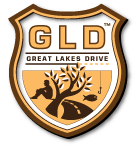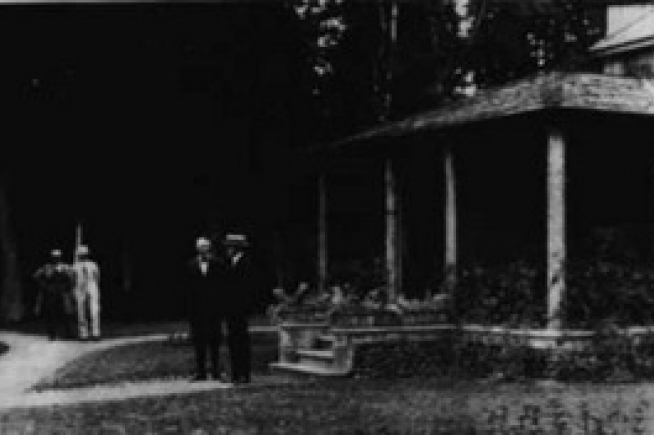Brule River Sportsmen’s Club
Brule River Sportsmen’s Club
Bois Brule River, Wisconsin
The Brule River Sportsmen’s Club, Inc. is a non-profit organization dedicated to the preservation of the Brule River in northwest Wisconsin. The Brule River is one of the finest spring-fed streams in the nation and it is the intent of the Brule River Sportsmen’s Club to help maintain its cold, clean waters and aesthetic beauty.
The Brule River Sportsmen’s Club is an active organization dedicated to the preservation and improvement of the Brule River and its environment. Membership presently (2011) numbers more than 500 nationwide. It is a state non-profit entity that received its federal 501 (c) (3) classification as an educational, charitable and social organization in 2000. The group meets monthly except for December
Fishing The River
(Check WDNR Fishing Regulations Prior to Fishing)
Fishing on the Bois Brule River in Douglas County, Wisconsin begins on the last Saturday in March, from U.S. Hwy. 2 downstream to Lake Superior and continues through November 15. Fishing is prohibited from one-half hour after sunset to one-half hour before sunrise before the first Saturday in May and after September 30.
The section of the Brule River upstream of U.S.Hwy. 2 and all of its tributaries open to fishing on the first Saturday in May, (at 5:00 a.m.) and continue through September 30. Examples of Brule River tributaries are Casey Creek, Rocky Run, Trask Creek, Little Brule, Wilson Creek, both East and West Forks of the Brule, Nebagamon Creek, and Blueberry Creek.
The spring steelhead run usually begins in late March and extends through May. During the first several weeks of the early season, the vast majority of steelhead caught are fish that remained in the river from the previous fall run. Bright, spring-run fish start appearing in April and continue through early May. Water temperatures dictate peak movement. Most fish are taken on yarnflies, spawn, large caddis fly imitations, and various types of hardware (i.e., spoons and spinners). The deep runs and pools are favorite holding areas for the fish.
A small run of chinook salmon ascend the river from early July through mid-October with a peak somewhere during mid-August to late September. Most chinook are taken soon after they enter the stream. At this time they are still silver and are quite a battle for even the most experienced fisherman. They seem to prefer flashing lures like spinners or spoons and tend to hold in the slower, deep water.
The lake-run of brown trout begins in early July and extends through late October. The peak is from mid-July to mid-September. Favorite baits include spoons, spinners, flatfish, and live bait such as night crawlers. The brown is not an easy fish to catch, but with persistence and by fishing the slower, deep holes during low-light periods, the odds of landing one should be in your favor.
Coho salmon are found moving up the Brule from late August to late November. Depending on water conditions, the peak is usually sometime in September. Coho can be caught on a variety of bait selections. They seem to prefer the slower water areas.
The fall run of steelhead begins moving up the Brule in mid-August and continues through late November. The largest runs usually occur sometime between mid-September and late October. Water conditions (i.e., temperature, water level, clarity) will affect the exact timing of the run, so the peak will vary from year-to-year. One can expect to find the fish associated with the moderate velocity areas but usually behind or near some type of current break (i.e., rocks, logs, stream bank). They will tend to hold in the deeper holes as the water temperature drops later in the season. A wide variety of baits which includes yarnflies, spawn, flatfish, and all types of spoons and spinners are appealing to fall-run steelhead.
The river north of U.S. Hwy. 2 has many well-marked access points all the way to Lake Superior. They are located throughout the lower river and provide an excellent opportunity to fish different sections of the river as it changes character. The Club has a map of the lower river for sale. Click on Club Store to purchase one.
The section of river south of Co. Hwy. B is noted for its resident brown and brook trout fishery. Some of the best fishing occurs in the stretch between Co. Hwy. B and Co. Hwy. S. (special regulations stretch). This part of the river is slow and wide and is excellent for fly fishing. The larger insect hatches occur in this area from May to the end of June. This area gets a heavy amount of canoe traffic during the summer months, especially during weekends. The Club also has a map of the upper river for sale. Click on Club Store to purchase one.
The land adjacent to the river between Stones Bridge on Co. Hwy. S to just below Co. Hwy. B is mostly privately owned, so access is limited.
There are two state forest campgrounds located on the Brule River. Copper Range is located approximately four miles north of the town of Brule. The other (Bois Brule) is located near the Ranger Station, about one mile southwest of Brule. There is no electricity provided at either of these sites. If it is desired, a private campground (Brule River Campground) is located in Brule on U.S. Hwy. 2.
Club History
The Brule River Sportsmen’s Club obtained it’s charter on July 3, 1968 at which time it had a membership of 127. The Club had it’s beginning, however, six years before when a small group of individuals, namely Tom Johnson, Larry Denston and Ray Miller met at Jack & Edna’s Tavern (now the Hungry Trout) with other anglers who aired their gripes about the fishery (possibly over a few beers) and decided that a Sportsmen’s Club should be formed in order to better address the concerns they had about the Brule River. Their main concern, as well as many other anglers, was the decline of steelhead and brown trout fishery.
Considerable interest was evident so each person was asked to join the new Club by contributing $5.00 for a membership. In the beginning there were no regular meetings and no officers. Money was collected and a list of members was maintained by Louise Denston, who with her husband, Larry, operated Jack and Edna’s Tavern. Membership soon grew to 20 or more fishermen. Meetings were not held on a regular basis, but were called occasionally in the back room at Jack & Edna’s. Other early members to join were John Lee, Walt Muttenen, Edna Anderson, Emil Tahtinen, Arnie Schultz, Roger Martin Jimmy Killoren, Dick Pariso, John Rogers, Roy Lyons and Phil Larson. Most members of the new Club attributed the decline in fishing success to the development of a sand bar over the mouth of the Brule over a period of years, causing the entrance into the Lake to move to the west by several hundred feet and reduced the depth to only two or four feet, which many thought impeded the migration of trout into the river.
Years before the entrance ran straight out into the Lake with a depth of about 8 or 10 feet. But at that time the mouth of the stream was protected by some old pilings which were the remains of a pier used by sailing vessels in the early 1800’s to load logs which were floated down the river during the logging days. This pier and the pilings deteriorated and disappeared gradually over a long period of years, mainly due to weather and ice conditions.The first Club project was an attempt to reestablish the old location of the entrance of the Brule River into Lake Superior. Original thoughts of doing this without DNR approval were discarded after due deliberation. Permits and help from the DNR were soon received and the work was completed. However this turned out to be a fiasco. Heavy storms and high waves soon replaced the sand at the entrance where it was removed so nothing was accomplished.
Thereafter, no further attempt was made to change the course of the river. The membership of the Brule River Sportsmen’s Club grew slowly during the next few years. In 1965 under the leadership of several new energetic members it was decided to have a drive to increase the membership to over 100 in order to qualify for a charter. At this time, Harvey Stipe, a new resident in Brule joined the Club and was appointed as chairman of a committee to draw up the Constitution and By-Laws (click on Constitution and By-Laws) and apply for a charter. After diligent effort on the part of many members this was accomplished by July 3, 1968. Dues were set at $3.00 per year and officers were elected as follows:Tom Johnson, President Walt Muttenen, Vice President Larry Denston, Treasurer Harvey Stipe, Secretary Reino Perala, Attorney.
During many years thereafter the Club continued normal activities for the preservation and improvement of the river. Many people enjoyed the river for fishing, camping, hiking, etc. Tubing (the use of inflated inner tubes to float down the river) also became very popular and reached proportions which created user conflicts, causing many complaints from fishermen, canoeists, and property owners. The Brule River Sportsmen’s Club took the attitude that tubing on a pristine river like the Brule is an unwarranted violation of that resource and should be prohibited. In 1976 the DNR began work on the Master Plan the Brule River which included the proposal to ban tubing on the Brule. In 1979 the Legislative Commission headed by Don Simonds endorsed the proposal by the Natural Resources Board to seek legislation prohibiting tubing on the Brule River. It took two years of effort by the Legislative Committee and members such as Roger Anderson, the Club’s president, and Carl Runge, a Madison University law professor and Brule River resident, to lobby legislators and testify at three public hearings before Bill S-351 passed the State Senate and Assembly and was signed into law by Governor Dreyfus.
By 1981 the Club’s paid up membership increased to 619 with continued growth hoped for in the years ahead.
Read more about this fantastic club.
Brule River Sportsmen’s Club
Club Store – Great Fishing Spot Maps
Fishing Maps & More
All content and photo the property of Brule River Sportsmen’s Club. Photo from Cedar island on the Bois Brule River.


